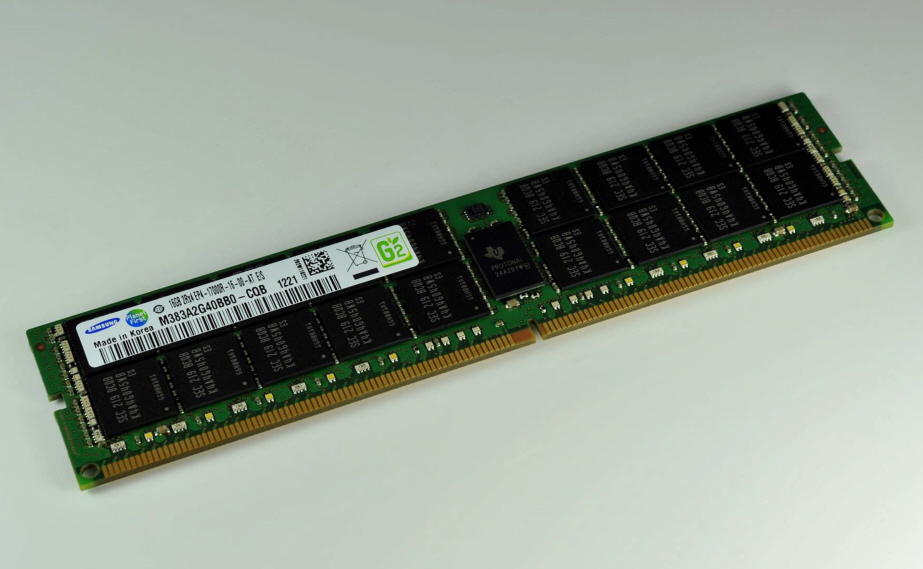Cadence Announces First DDR4 Controller and PHY IP in 28-nm
Electronic design automation company Cadence said that it has qualified its DDR4 SDRAM physical layer (PHY) and memory controller design IP in TSMC's 28-nm production process.
Cadence recently announced that it has developed "multiple" versions of its DDR PHY and controller IP based on advanced drafts of the DDR4 spec published by JEDEC.
"DDR4 is going to be the next big thing in DRAMs, but its signaling is challenging to handle," said Jim Handy of Objective Analysis in a prepared statement. "As PCs migrate to DDR4 DRAMs, this standard will become the volume leader, giving it a price advantage that will be impossible to ignore. ASIC designers who want to take advantage of that pricing are likely to need a lot of help putting a reliable interface on their products."
Cadence said that its PHY exceeds the data rates described by the DDR-2400 draft, but did not reveal what speeds have been achieved. The company also announced that it has a "low-power, all-digital mobile PHY implementation that exceeds the data rates called for in both the DDR-1600 and DDR-1866 DDR3 standards and the maximum data rate of the low-power LPDDR2 standard."
Cadence said that its DDR4 memory controller technology and PHY IP is available now.
Contact Us for News Tips, Corrections and Feedback
Get Tom's Hardware's best news and in-depth reviews, straight to your inbox.

Wolfgang Gruener is an experienced professional in digital strategy and content, specializing in web strategy, content architecture, user experience, and applying AI in content operations within the insurtech industry. His previous roles include Director, Digital Strategy and Content Experience at American Eagle, Managing Editor at TG Daily, and contributing to publications like Tom's Guide and Tom's Hardware.
-
mforce2 I disagree , it didn't use to be a bottleneck. Now though the CPUs have integrated GPUs and those GPUs really do benefit from fast RAM. The CPU part doesn't really care that much, I agree.Reply -
Memory is still a bottleneck for integrated GPUs. More bandwidth and lower latency per channel is always welcome.Reply
-
memadmax If you think that ram isn't a bottleneck then either you don't know what you are talking about or all you do is run graphics intensive apps(aka games) all day...Reply
Main ram is still turtle speed compared to a CPU and Cache ram. -
idroid overzealotMemory is still a bottleneck for integrated GPUs. More bandwidth and lower latency per channel is always welcome.Reply
That's exactly why it would be awesome if Nvidia or AMD make a GPU with RAM-BUS or something -
alidan mforce2I disagree , it didn't use to be a bottleneck. Now though the CPUs have integrated GPUs and those GPUs really do benefit from fast RAM. The CPU part doesn't really care that much, I agree.Reply
you are not using those embedded chips to really do anything high end, its really just an added bouns, for most if not all users of them that the graphics can be done better.
if you are even a mild gamer, a low low end gpu beats out integrated.
even the best integrated gpu is beaten out by a 50$ gpu, so in that regard i refuse to call it a real bottleneck. -
EDVINASM memadmaxIf you think that ram isn't a bottleneck then either you don't know what you are talking about or all you do is run graphics intensive apps(aka games) all day...Main ram is still turtle speed compared to a CPU and Cache ram.Reply
Can you please base your answer on real-world example? Any app I know doesn't benefit significantly from RAM throughout increasing even 30%. I think more than just DDR4 introduction is needed to tackle this. Although I have no RAM bottlenecks and I run 16GB 1600MHz (2x4x200MHz to be more precise) - that's in Adobe Preduction Suite and games.
As for post above - while I do agree faster RAM helps integrated GPU I also know that these GPUs for the moment are nowhere near low-mid range dedicated GPUs so RAM speed isn't the only issue here. -
bustapr alidanyou are not using those embedded chips to really do anything high end, its really just an added bouns, for most if not all users of them that the graphics can be done better. if you are even a mild gamer, a low low end gpu beats out integrated. even the best integrated gpu is beaten out by a 50$ gpu, so in that regard i refuse to call it a real bottleneck.try thinking about mainstream laptops instead of desktops. integrated gpus are usually the best you can get on a laptop(like 99% of laptop users dont have discrete gpus in laptops) at its price. and people who have these laptops try to push its capabilities alot of the time either to play some game or to edit a video. better am would indeed help out in this area. true that for desktops, integrated graphics is beat out by cheap discrete, but its not usually the case for laptops.Reply
